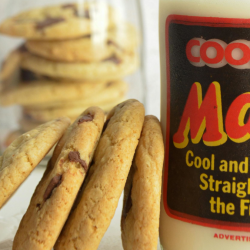There have been winners and losers in the first-party data gold rush…
While some brands and publishers have amassed enough email addresses and mobile IDs to build and target valuable audiences, many more have hit a wall in both the scale and detail of their authenticated user data. Faced with shrinking addressability, it can feel like there’s no choice but to pay to play in the walled gardens of social and retail platforms.
But there’s a lot more to first-party data than emails, and there’s a lot more to data than first-party. Businesses need to look beyond the walls of their CRM to explore and unify the wider world of data: campaign data, website/app visitation data, panel data, second-party data from collaborations, third-party data from marketplaces, and more.
Through smart sampling and AI-powered modelling, insights and audiences can be revealed from what might first appear to be disconnected bits of data, and then leveraged for partnerships that don’t just go beyond the walls of your CRM, but beyond the walls of your business entirely.
A new data ecosystem breaking down barriers within and between businesses
You may remember — before AI took over headlines in the marketing press — that data clean rooms were the darlings of the adtech world. Their promise of secure data sharing to identify overlapping audiences seemed to plug the gap left by third-party cookies, signal deprecation, and privacy regulations. But outside of massive data sets of authenticated emails owned by major media owners and retailers, data clean rooms appeared too limited in their outputs to be useful for the majority of businesses.
Today, clean rooms are just one component of a growing data collaboration ecosystem, with platforms emerging that are dedicated to maximising the types of data that can be on-boarded, the analysis that can be conducted on that data, and how it can be safely shared with others.
But the perception that data collaboration is only for those with huge stores of email addresses and/or mobile IDs remains. In reality, it’s those who lack these assets who have the most to gain from this new, democratised approach to data. Let’s say you’re a local news publisher: while the largest national publications have the user base to push for large volumes of email sign-ups and subscriptions, local news publishers tend to focus on accessibility and avoid putting up walls for their content. You may still have an account system, but the number of authenticated and consented emails are unlikely enough to be able to be useful for commercial partnerships on their own.
But look beyond emails, and you’re probably sitting on a wealth of data that could be useful to commercial partners
For example, combining anonymous site engagement and geolocation data can reveal the interests of specific audiences in specific locations, regardless of whether or not they are logged in.
By demonstrating how topics associated with prospective home buyers — such as guides to local sports or community activities like live music — index against various towns, publishers can develop a bespoke targeted advertising product for real estate companies. These real estate companies are likely struggling themselves to grow their first-party audiences beyond logged in users, and so a partnership with a local publisher that reveals exclusive prospecting opportunities will be highly valuable to them.
Data collection wouldn’t have to stop at what can be gleaned from site usage, either. Local news readers tend to be highly engaged and trusting of the publication, and so will be responsive to anonymous site surveys that can provide rich consumer preference data on your audiences, from preferred models of cars to income brackets.
As for the real estate company in this example, there are plenty of opportunities to uncover audience data through data collaboration. Unlike the data offerings of walled gardens, the second-party data surfaced from such collaborations are unique and proprietary to the partnership, and provide opportunities for a brand to directly influence a publisher’s strategy (and vice versa) to best serve each party’s objectives.
Data collaboration with other businesses that have strong subject matter expertise, but are not in the same competitive category offer opportunities to reach exclusive audiences. An auto dealer, for example, can provide data on what types of car sales are trending and where.
See a big surge in SUV customers in a certain area? Then you’re probably looking at a lot of families. Such insights are key to informing marketing strategy for the real estate company, who in turn can provide their own audience insights to the auto dealer. Looking further afield, panel data from national measurement bodies can provide insights into audience makeup through the simple insertion of a tag on the page, and even limited numbers of emails or mobile IDs can be modelled probabilistically and connected to universal identifiers to uncover off-site activities.
Whichever data you gather, the important thing is to collate it in an ID-agnostic, unified platform for easy access, both within your organisation and for external collaborators.
Today, every business is a data business
The truth of business today is that every business is now a data business. Regardless of your size or resources, your survival in the market will depend on how you can leverage your own data, and what data you can secure through strategic collaborations. While big tech platforms may seem like the safest port of call, investing in platforms that facilitate mutually beneficial collaboration can cultivate a more equitable data ecosystem.
By pooling data resources across business borders, the limits of authenticated identifiers can be overcome without sacrificing independence or exclusive ownership of audiences. At a time when the whims of Google are disrupting the industry from top to bottom, the dangers of being too beholden to walled gardens for reaching new audiences is clear. Building your own data assets and collaborating on your terms is a path not just to growth, but to freedom.
Featured image: Alina Grubnyak / Unsplash


































